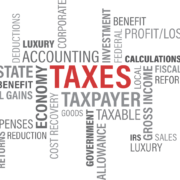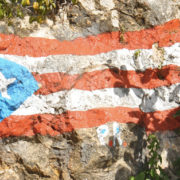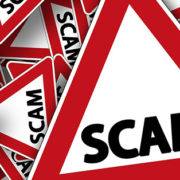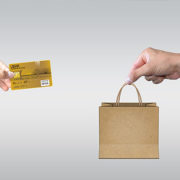New Rule for Sales of Clothing and School Supplies
SPECIFIC REASONS FOR FINDING AN IMMEDIATE DANGER TO THE PUBLIC HEALTH, SAFETY OR WELFARE:
Section 54 of Chapter 2018-118, Laws of Florida, authorizes the Department of Revenue to promulgate emergency rules to implement the provisions of the law specifying a period during which the sale of certain clothing and school supplies are exempt from sales and use tax. The law provides that conditions necessary for an emergency rule have been met. The promulgation of this emergency rule ensures that the public is notified in the most expedient and appropriate manner regarding the exemption during the period August 3, 2018, through August 5, 2018, for sales of clothing, wallets, or bags having a selling price of $60 or less per item and for sales of school supplies having a selling price of $15 or less per item. The exemption does not apply to sales within a theme park or entertainment complex, as defined in Section 509.013(9), F.S., or within a public lodging establishment, as defined in Section 509.013(4), F.S., or within an airport, as defined in Section 330.27(2), F.S. The rule defines “clothing,” “school supplies,” “theme park or entertainment complex,” “public lodging establishment,” “airport” and “mail order sales.” The rule describes the items that are included in the exemption and explains how various transactions are to be handled for purposes of the exemption, including sales of sets of both exempt and taxable items, items normally sold as a unit, mail order sales, shipping and handling charges, layaway sales, rain checks, exchanges, coupons, rebates, and discounts, repairs and alterations, gift certificates, rentals of clothing, and merchant’s license fees. The rule provides procedures for qualified businesses to opt out of participation in the holiday, as allowed by the law creating the holiday. The rule provides a list of items and their taxable status during the exemption period for clothing and school supplies.
REASON FOR CONCLUDING THAT THE PROCEDURE IS FAIR UNDER THE CIRCUMSTANCES: The Legislature expressly authorized the promulgation of an emergency rule to administer the provisions of Section 54 of Chapter 2018-118, Laws of Florida, which specify a period during which the sales of certain clothing and school supplies are exempt from sales and use tax. Additionally, an emergency rule is the most expedient and appropriate means of notifying dealers and taxpayers of the provisions of Section 54 of Chapter 2018-118, Laws of Florida.
SUMMARY: Emergency Rule 12AER18-04 notifies the general public and retailers of the exemption during the period August 3, 2018 through August 5, 2018, for sales of clothing, wallets, or bags having a selling price of $60 or less per item and for sales of school supplies having a selling price of $15 or less per item.
THE PERSON TO BE CONTACTED REGARDING THE EMERGENCY RULE IS: Tammy Miller, Technical Assistance and Dispute Resolution, Department of Revenue, P.O. Box 7443, Tallahassee, Florida 32314-7443, telephone (850)717-6309.
THE FULL TEXT OF THE EMERGENCY RULE IS:
12AER18-04 Sales of Clothing and School Supplies; Sales Tax Holiday During the Period August 3 through August 5, 2018.
(1) Definitions. For purposes of this rule, the following definitions apply:
(a) “Holiday Period” means the period from August 3, 2018, through August 5, 2018.
(b) “Clothing” means any article of wearing apparel, including all footwear, except skis, swim fins, roller blades, and skates, intended to be worn on or about the human body. “Clothing” does not include watches, watchbands, jewelry, umbrellas, or handkerchiefs.
(c) “School supplies” means pens, pencils, erasers, crayons, notebooks, notebook filler paper, legal pads, binders, lunch boxes, construction paper, markers, folders, poster board, composition books, poster paper, scissors, cellophane tape, glue, paste, rulers, computer disks, protractors, compasses, and calculators.
(d) “Theme park or entertainment complex” means a facility as defined in Section 509.013(9), F.S.
(e) “Public lodging establishment” means a facility as defined in Section 509.013(4), F.S.
(f) “Airport” means a facility as defined in Section 330.27(2), F.S.
(g) “Mail order sale” means a sale as defined in Section 212.0596(1), F.S.
(2) Clothing Sales.
(a) During the Holiday Period, no tax is due on the sale or purchase of any article of clothing, wallet, or bag, including handbags, backpacks, fanny packs, and diaper bags, but excluding briefcases, suitcases, and other garment bags, with a selling price of $60 or less per item. This exemption does not apply to sales of clothing, wallets, or bags within a theme park, entertainment complex, public lodging establishment, or airport.
(b)1. The sales tax exemption applies to each eligible item of clothing, wallet, or bag, selling for $60 or less per item. The exemption applies regardless of how many items are sold on the same invoice to a customer.
- Example: A customer purchases two shirts for $50 each. Both items are eligible for the exemption, even though the customer’s total purchase price ($100) exceeds $60.
(c)1. The exemption does not apply to the first $60 of price of an eligible item of clothing, wallet, or bag selling for more than $60.
- Example: A customer purchases a pair of pants costing $80. Tax is due on the entire $80.
(3) School Supplies.
(a)1. During the Holiday Period, no tax is due on the sale or purchase of any item of school supplies with a selling price of $15 or less per item. This exemption does not apply to sales of school supplies within a theme park, entertainment complex, public lodging establishment, or airport.
- Example: A customer purchases a set of markers for $12. The purchase qualifies for the exemption.
- Example: A customer purchases a calculator costing $18. Tax is due on the entire $18.
(b)1. The sales tax exemption applies to each eligible item of school supplies selling for $15 or less per item. The exemption applies regardless of how many items are sold on the same invoice to a customer.
- Example: A customer purchases ten composition books for $2.50 each. All ten items will qualify for the exemption, even though the customer’s total purchase price ($25) exceeds $15.
(4) Sales of Sets Containing Both Exempt and Taxable Items.
(a) When exempt items are normally sold together with taxable merchandise as a set or single unit, the sales price of the set or single unit is subject to sales tax.
(b) Example: A gift set consisting of a wallet (which is defined as an eligible “clothing item”) and key chain (which is not defined as an eligible “clothing item”) is sold for a single price of $35. Although the wallet would otherwise be exempt during the Holiday Period, the sales price of the gift set is subject to tax.
(c) Example: A desk set consisting of a stapler (which is not defined as an eligible “school supply”) and a pair of scissors (which is defined as an eligible “school supply”) is sold for a single price of $10. Although the scissors would otherwise be exempt during the Holiday Period, the sales price of the desk set is subject to tax.
(5) Articles Normally Sold as a Unit.
(a) Articles that are normally sold as a unit must continue to be sold in that manner; they cannot be separately stated and sold as individual items in order to obtain the exemption.
(b) Example: A pair of shoes normally sells for $120. The pair of shoes cannot be split in order to sell each shoe for $60 to qualify for the exemption.
(c) Example: A suit is normally priced at $100 on a single price tag. The suit cannot be split into separate articles so that any of the components may be sold for $60 or less in order to qualify for the exemption. However, components that are normally priced as separate articles may continue to be sold as separate articles and qualify for the exemption if the price of an article is $60 or less.
(d) Example: A pen and pencil set is normally priced at $18 on a single price tag. The set cannot be split into separate articles so that either of the components may be sold for $15 or less in order to qualify for the exemption.
(6) Buy One, Get One Free or for a Reduced Price.
(a) The total price of items advertised as “buy one, get one free,” or “buy one, get one for a reduced price,” cannot be averaged in order for both items to qualify for the exemption.
(b) Example: A retailer advertises pants as “buy one, get one free.” The first pair of pants is priced at $110; the second pair of pants is free. Tax is due on $110. The store cannot sell each pair of pants for $55 in order for the items to qualify for the exemption. However, the retailer may advertise and sell the items for 50 percent off, selling each pair of $110 pants for $55, making each pair eligible for the exemption.
(c) Example: A retailer advertises shoes as “buy one pair at the regular price, get a second pair for half price.” The first pair of shoes is sold for $80; the second pair is sold for $40 (half price). Tax is due on the $80 shoes, but not on the $40 shoes. The store cannot sell each pair of shoes for $60 in order for the items to qualify for the exemption. However, a retailer may advertise the pairs for 25 percent off, thereby selling each pair of $80 shoes for $60, making each pair eligible for the exemption.
(7) Mail Order Sales.
(a) During the Holiday Period, eligible items purchased by mail order, including sales transactions over the Internet, are exempt if the order is accepted during the Holiday Period for immediate shipment, even if delivery is made after the Holiday Period.
(b) An order is accepted by the company when action has been taken to fill the order for immediate shipment. Actions to fill an order include assigning an “order number” to a telephone order, confirming an Internet order by an email to the customer, or placing a date received on an order received by mail.
(c) An order is considered to be for immediate shipment when delayed shipment is not requested by the customer. An order is for immediate shipment even if the shipment may be delayed because of a backlog of orders or stock is currently unavailable or on back order.
(8) Shipping and Handling Charges.
(a) When separately stated shipping charges are part of the sales price of the items listed on a sales invoice or receipt, the shipping charges must be proportionately allocated to each item sold to determine the total sales price of the item. The cost of each item is divided by the total cost of all the items ordered to obtain the percentage of cost that each item bears to the total order. The amount of the shipping charge applicable to each item is calculated by multiplying the total shipping charge by the percentage of cost for each item.
(b) Example: A customer orders a $60 dress and a $20 shirt, for a total of $80 during the Holiday Period. The shipping charge is $10. The percentage of cost for the shirt is 25 percent (the ratio of shirt cost to total cost is $20 to $80. $20 divided by $80 is 25 percent.) The portion of the $10 shipping charge which is allocated to the shirt is therefore $2.50, or 25 percent of $10. The percentage of cost for the dress is 75 percent (the ratio of dress cost to total cost is $60 to $80. $60 divided by $80 is 75 percent.) The portion of the $10 shipping charge which is allocated to the dress is therefore $7.50, or 75 percent of $10. Once the shipping charge has been allocated, the total sales price for the shirt is $22.50 and the total sales price for the dress is $67.50. The shirt qualifies for the exemption. The dress is more than $60 and does not qualify for the exemption.
(9) Layaway sales. A layaway sale is a transaction in which merchandise is set aside for future delivery to a customer who makes a deposit, agrees to pay the balance of the purchase price over a period of time, and receives the merchandise at the end of the payment period. Eligible items placed on layaway during the Holiday Period are tax exempt, even if final payment of the layaway is made after the Holiday Period. If a customer makes a final payment and takes delivery of the item during the Holiday Period, the eligible items are tax exempt.
(10) Rain checks. Eligible items purchased during the Holiday Period using a rain check will qualify for the exemption regardless of when the rain check was issued. However, issuance of a rain check during the Holiday Period will not qualify eligible items for the exemption if the item is actually purchased after the Holiday Period.
(11) Exchanges.
(a) If a customer purchases an eligible item during the Holiday Period, then later exchanges the item for the same item (different size or different color), no additional tax will be due even if the exchange is made after the Holiday Period.
(b) If a customer purchases an eligible item during the Holiday Period, then later returns the item and receives credit on the purchase of a different item, the new item purchased is subject to tax.
(12) Coupons, Rebates, and Discounts.
(a)1. Manufacturer’s coupons. The sales price of an item includes all consideration received by the retailer for that item. The price of an item is not limited to the amount paid by a customer. Manufacturer’s coupons do not reduce the sales price of an item, because the retailer is reimbursed for the amount of any discount provided to a customer. Therefore, the amount of the reimbursement is included in the taxable sales price of an item.
- Example: A jacket sells for $65. The customer has a $10 manufacturer’s coupon good for the purchase of the jacket. The manufacturer’s coupon does not reduce the sales price of the jacket. Tax is due on $65, even though the customer only pays the retailer $55 for the jacket.
(b)1. Store coupons and discounts. A coupon, discount, or rebate offered by the retail seller reduces the sales price of an item because it reduces the total amount received by the retail seller for the item. Therefore, a store coupon or discount can be used to reduce the sales price of a clothing item to $60 or less, or a school supply item to $15 or less, to determine if or to what extent an item qualifies for the exemption.
- Example: A customer buys a $400 suit and a $65 shirt. The retailer is offering a 10 percent discount. After applying the 10 percent discount, the final sales price of the suit is $360, and the sales price of the shirt is $58.50. The suit is taxable (its price is over $60), and the shirt is exempt (its price is less than $60).
(c)1. Rebates. Rebates occur after the sale and do not affect the sales price of an item purchased.
- Example: A jacket sells for $65. The customer receives a $10 rebate from the manufacturer. The rebate occurs after the sale, so it does not reduce the sales price of the jacket. Tax is due on $65.
(13) Repairs or Alterations to Eligible Items.
(a) Repairs to eligible items do not qualify for the exemption.
(b)1. Alterations to clothing or footwear do not qualify for the exemption, even though alterations may be sold, invoiced, and paid for at the same time as the item to be altered.
- Example: A customer purchases a pair of pants for $55 and pays $5 to the retailer to have the pants cuffed. The $55 charge for the pants is exempt; however, tax is due on the $5 alterations charge.
(14) Gift Cards.
(a) Eligible items purchased during the Holiday Period using a gift card will qualify for the exemption, regardless of when the gift card was purchased. Eligible items purchased after the Holiday Period using a gift card are taxable, even if the gift card was purchased during the Holiday Period. A gift card does not reduce the selling price of an item.
(b) Example: A customer purchases a dress priced at $110 and uses a $50 gift card. Tax is due on $110. The gift certificate does not reduce the selling price to $60 for purposes of the exemption.
(15) Rentals. Rentals of eligible items do not qualify for the exemption.
(16) License Fees or Other Fees imposed by Panama City and Panama City Beach.
(a) Panama City and Panama City Beach impose a 1 percent merchant’s license fee or tax on retailers. The merchant’s license fee is included in the sales price of each item. If the fee is separately stated, it must be assigned to the sales price of each item on the invoice to determine if an item is exempt during the holiday.
(b) Example: A jacket sells for $59.95. The separately stated 1 percent gross receipts fee for this item is $0.60. Since the gross receipts fee is part of the sales price of the item ($60.55), the jacket will not qualify for the exemption.
(17) Option to not participate. Qualified businesses may choose not to participate in the tax holiday.
(a) Qualification. Businesses may choose to opt out of the tax holiday when less than five percent (5%) of their gross sales of tangible personal property during calendar year 2017 are sales of items that would be exempt during the tax holiday period. Businesses with multiple locations must include the gross sales of all of their Florida locations into this calculation. For businesses that were not in operation during the 2017 calendar year, this option is available when less than five percent (5%) of the inventory of items for sale by the business are items that would be tax exempt during the tax holiday.
(b) Election. Qualifying businesses choosing not to participate in the tax holiday must send a written notice to the Department by August 1, 2018. The notice must be on business letterhead and state that the business meets the qualifications stated in paragraph (a) and has chosen not to participate in the tax holiday. The notice must be signed by an individual authorized to sign on behalf of the business. Businesses with multiple locations may send a single notice stating that all of their Florida locations will not participate in the tax holiday. The notice may be delivered in one of three ways:
- A letter can be mailed to the following mailing address:
Sales Tax Holiday
Account Management MS 1-5730
Florida Department of Revenue
5050 W Tennessee St
Tallahassee, FL 32399-0160
- A scanned letter can be emailed to: registration@floridarevenue.com
- A letter can be faxed to 850-922-0859.
(c) Sample Notice. The notice may take any form as long as it clearly states that the business is electing not to participate in the holiday. An example of notice language is as follows: “In accordance with Section 54 of Chapter 2018-118, Laws of Florida, (Name of Business) has chosen not to participate in the Back to School Sales Tax Holiday, August 3-5, 2018. For questions, please contact (name of contact person at business) at (contact telephone number or email address).” The notice must be signed by an authorized individual.
(d) Posting of Notice. Businesses that do not participate in the tax holiday must post the notice at each business location stating their choice not to participate in the Back to School Sales Tax Holiday. The notice must be posted in a conspicuous location where it is easily visible to customers.
(18) List of Items of Clothing and Their Taxable Status During the Holiday Period. The following is a list of items of clothing and their taxable status during the Holiday Period, if they are sold for $60 or less per item. This is not an exhaustive list. T = Taxable, E = Exempt.
A
T Accessories (generally)
E Barrettes and bobby pins
E Belt buckles
E Bow ties
E Hair nets, bows, clips, and hairbands
E Handbags
T Handkerchiefs
T Jewelry
T Key cases
E Neckwear
E Ponytail holders
E Scarves
E Ties
E Wallets
T Watchbands
T Watches
E Aerobic and Fitness clothing
E Aprons and Clothing shields
T Athletic gloves
T Athletic pads
E Athletic supporters
B
E Baby clothes
E Backpacks and Bookbags
E Bandanas
E Baseball cleats
E Bathing suits, caps, and cover-ups
E Belts
E Bibs
E Bicycle helmets (youth)**
E Blouses
E Boots (except ski or fishing boots)
E Bowling shoes (purchased)
T Bowling shoes (rented)
E *Braces and supports worn to correct or alleviate a physical incapacity or injury
E Bras
T Briefcases
C
T Checkbook covers (separate from wallets)
T Chest protectors
E *Choir and altar clothing
E Cleated and spiked shoes
E *Clerical vestments
T Cloth and lace, knitting yarns, and other fabrics
T Clothing repair items, such as thread, buttons, tapes, iron-on patches, or zippers
E Coats
E Coin purses
T Corsages and boutonnieres
T Cosmetic bags
E Costumes
E Coveralls
T Crib blankets
D
E Diaper bags
E Diapers, diaper inserts (adult and baby, cloth or disposable)
T Diving suits (wet and dry)
E Dresses
T Duffel bags
E
T Elbow pads
F
E Fanny packs
T Fins
T Fishing boots (waders)
E Fishing vests (nonflotation)
T Football pads
E Formal clothing (purchased)
T Formal clothing (rented)
G
T Garment bags
E Gloves (generally)
T Baseball
T Batting
T Bicycle
E Dress (purchased)
E Garden
T Golf
T Hockey
E Leather
T Rubber
T Surgical
T Tennis
E Work
T Goggles (except *prescription)
E Graduation caps and gowns
E Gym suits and uniforms
H
T Hard hats
E Hats and caps
T Helmets (bicycle**, baseball, football, hockey, motorcycle, sports)
E Hosiery, including support hosiery
E Hunting vests
I – J
T Ice skates
T In-line skates
E Jackets
E Jeans
K
T Key chains
T Knee pads
L
E Lab coats
E Leggings, tights, and leg warmers
E Leotards
T Life jackets and vests
E Lingerie
T Luggage
M – N
T Make-up bags
E Martial arts attire
O – P
E Overshoes and rubber shoes
T Pads (football, hockey, soccer, elbow, knee, shoulder)
T Paint or dust masks
E Pants
T Patterns
T Protective masks (athletic)
E Purses
R
E Raincoats, rain hats, and ponchos
E Receiving blankets
E *Religious clothing
T Rented clothing (including uniforms, formal wear, and costumes)
T Repair of wearing apparel
E Robes
T Roller blades
T Roller skates
S
E Safety clothing
T Safety glasses (except *prescription)
E Safety shoes
E Scout uniforms
T Shaving kits/bags
E Shawls and wraps
T Shin guards and padding
E Shirts
E Shoe inserts and insoles
E Shoes (including athletic)
E Shoulder pads (e.g., dresses or jackets)
T Shoulder pads (football, hockey, sports)
E Shorts
T Ski boots (snow)
T Ski vests (water)
E Ski suits (snow)
T Skin diving suits
E Skirts
E Sleepwear (nightgowns and pajamas)
E Slippers
E Slips
E Socks
T Suitcases
E Suits, slacks, and jackets
T Sunglasses (except *prescription)
E Suspenders
E Sweatbands
E Sweaters
T Swimming masks
E Swim suits and trunks
T
E Ties (neckties – bow ties)
E Tuxedos (excluding rentals)
U
T Umbrellas
E Underclothes
E Uniforms (work, school, and athletic – excluding pads)
V – W
E Vests
T Weight-lifting belts
T Wigs
* These items are always exempt as religious, prescription, prosthetic, or orthopedic items.
** Bicycle helmets marketed for use by youth are always exempt from sales tax.
(19) List of School Supplies and Their Taxable Status During the Holiday Period. The following is a list of school supplies and their taxable status during the Holiday Period if they are sold for $15 or less per item. T = Taxable, E = Exempt.
E Binders
T Books not otherwise exempt
E Calculators
E Cellophane (transparent) tape
E Colored pencils
E Compasses
E Composition books
E Computer disks (blank CDs only)
T Computer paper
E Construction paper
T Correction tape, fluid, or pens
E Crayons
E Erasers
E Folders
E Glue (stick and liquid)
E Highlighters
E Legal pads
E Lunch boxes
E Markers
T Masking tape
E Notebook filler paper
E Notebooks
E Paste
E Pencils, including mechanical and refills
E Pens, including felt, ballpoint, fountain, highlighters, and refills
E Poster board
E Poster paper
T Printer paper
E Protractors
E Rulers
E Scissors
T Staplers
T Staples
Rulemaking Authority 212.17(6), 212.18(2), 213.06(1), (2) FS, Section 54 of Chapter 2018-118, L.O.F. Law Implemented 95.091, 212.02(16), 212.05, 212.0596, 212.06, 212.13, 213.35, 215.26(1), 330.27(2), 509.013(4), (9) FS, Section 54, Chapter 2018-118, L.O.F. History-New.
THIS RULE TAKES EFFECT UPON BEING FILED WITH THE DEPARTMENT OF STATE UNLESS A LATER TIME AND DATE IS SPECIFIED IN THE RULE.
EFFECTIVE DATE: 06/20/2018
SOURCE: Florida Department of Revenue – http://floridarevenue.com/rules/Pages/default.aspx













